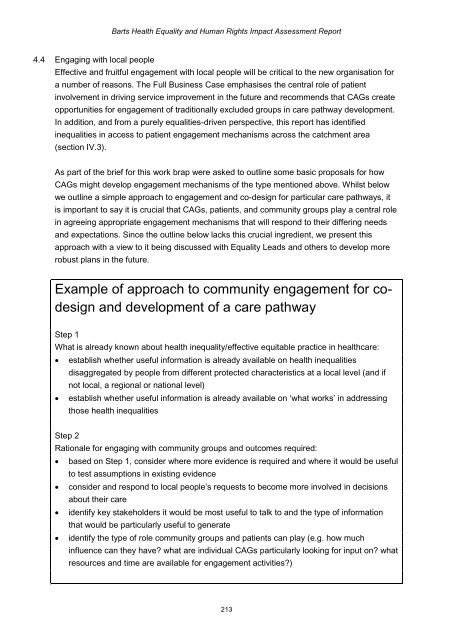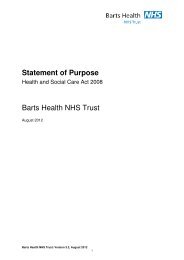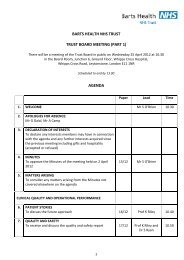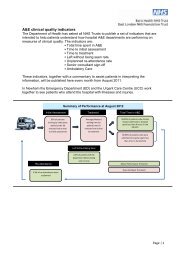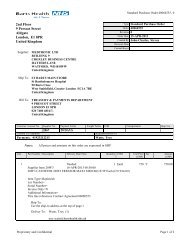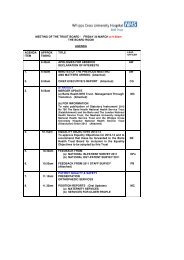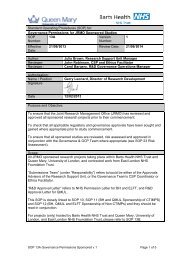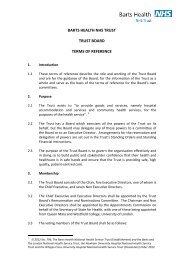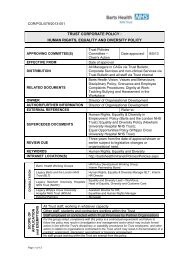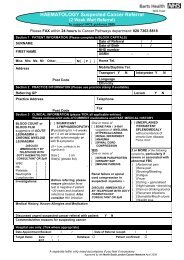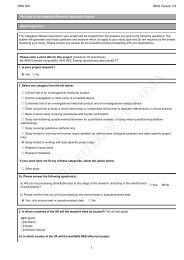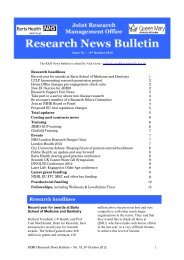Barts Health Equality and Human Rights Impact Assessment Report
Barts Health Equality and Human Rights Impact Assessment Report
Barts Health Equality and Human Rights Impact Assessment Report
- No tags were found...
You also want an ePaper? Increase the reach of your titles
YUMPU automatically turns print PDFs into web optimized ePapers that Google loves.
<strong>Barts</strong> <strong>Health</strong> <strong>Equality</strong> <strong>and</strong> <strong>Human</strong> <strong>Rights</strong> <strong>Impact</strong> <strong>Assessment</strong> <strong>Report</strong>4.4 Engaging with local peopleEffective <strong>and</strong> fruitful engagement with local people will be critical to the new organisation fora number of reasons. The Full Business Case emphasises the central role of patientinvolvement in driving service improvement in the future <strong>and</strong> recommends that CAGs createopportunities for engagement of traditionally excluded groups in care pathway development.In addition, <strong>and</strong> from a purely equalities-driven perspective, this report has identifiedinequalities in access to patient engagement mechanisms across the catchment area(section IV.3).As part of the brief for this work brap were asked to outline some basic proposals for howCAGs might develop engagement mechanisms of the type mentioned above. Whilst belowwe outline a simple approach to engagement <strong>and</strong> co-design for particular care pathways, itis important to say it is crucial that CAGs, patients, <strong>and</strong> community groups play a central rolein agreeing appropriate engagement mechanisms that will respond to their differing needs<strong>and</strong> expectations. Since the outline below lacks this crucial ingredient, we present thisapproach with a view to it being discussed with <strong>Equality</strong> Leads <strong>and</strong> others to develop morerobust plans in the future.Example of approach to community engagement for codesign<strong>and</strong> development of a care pathwayStep 1What is already known about health inequality/effective equitable practice in healthcare: establish whether useful information is already available on health inequalitiesdisaggregated by people from different protected characteristics at a local level (<strong>and</strong> ifnot local, a regional or national level) establish whether useful information is already available on ‘what works’ in addressingthose health inequalitiesStep 2Rationale for engaging with community groups <strong>and</strong> outcomes required: based on Step 1, consider where more evidence is required <strong>and</strong> where it would be usefulto test assumptions in existing evidence consider <strong>and</strong> respond to local people’s requests to become more involved in decisionsabout their care identify key stakeholders it would be most useful to talk to <strong>and</strong> the type of informationthat would be particularly useful to generate identify the type of role community groups <strong>and</strong> patients can play (e.g. how muchinfluence can they have? what are individual CAGs particularly looking for input on? whatresources <strong>and</strong> time are available for engagement activities?)213


